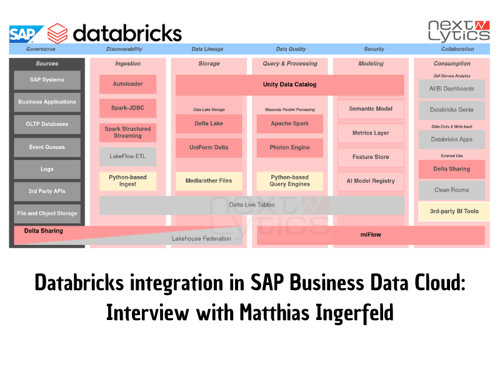Whitepaper: Best practices for sustainable Artificial Intelligence in companies
How is environmental sustainability of AI measurable?
What measures are available to developers?
How can responsible managers make the field more sustainable?

Shaping Business Intelligence

About us

Our Methodology

Data Science & Engineering

SAP Planning

Dashboarding
Artificial intelligence (AI) is ready for business. In 2021, 35% of companies already reported using AI in their day-to-day business. Another 42% said they were researching AI for themselves. Knowing these numbers, it's no longer possible to assume it's just a trend: artificial intelligence has arrived in companies!
The number of use cases is steadily increasing and the issues to be solved are becoming even more complex. As a result, the size and number of AI models must grow in line with the emerging ideas in companies and the operation of these models must become more and more routine.
Since data-intensive models often have to be trained for days on specialized hardware, this creates an ecological footprint that should not be underestimated and that many are often unaware of.
Already in 2019, model training or model finding in the field of natural language processing generated as much CO2 as five American cars including gasoline consumption during their entire life cycle. And the trend is upward.

The continuing entry of AI into companies and the resulting increase in CO2 consumption has given rise to a movement that aims to bring a more efficient and ecologically conscious design of artificial intelligence to research and companies under the buzzword "Green AI."
 The size of the models is continuously increasing. The foundations for sustainable design must therefore be laid sooner rather than later.
The size of the models is continuously increasing. The foundations for sustainable design must therefore be laid sooner rather than later.
What does a "green" design of artificial intelligence mean for companies?
The term "Green AI" is based on the topic of Green IT. Green IT deals with the general environmentally friendly and resource-saving design of information and communication systems throughout their eintire life cycle. In the case of sustainable AI in the ecological sense - keyword "Green AI" - the focus is primarily on modeking and model operation. Computation, whether in training or prediction, should be made as efficient as possible and energy consumption kept to a minimum.
In contrast to research, model operation is a big driver for greater environmental sustainability in the company. Making predictions or performing analysis causes about 90% of the model's energy consumption, according to a projection by AWS (Amazon Web Services).
Making AI systems more environmentally friendly does not necessarily have to come at the cost of performance or involve high investments. Even an algorithmically reduced execution time leads to a better ecological footprint and a gain in time as well as resources. Thus, when models are optimized, performance often benefits as well.
‣ Model efficiency
Optimized models have lower energy consumption. Here, costs for the calculation in the cloud or energy costs in the own data center are saved. Often the energy gain is also due to reduced runtimes in training and prediction. This ensures low latency for users and less waiting time for developers.
‣ Goverment regulations
Legal requirements such as Corporate Sustainability Reporting Directive (CSRD) ensure that companies must report specifically on the goals and actionsthey plan to take to meet sustainability targets. If you are part of a data-driven organization, Green AI offers many exciting approaches to the sustainability of your analytics.
‣ Sustainability as a decision criterion for customers
Sustainability is an important topic, especially in the end customer market. More and more customers are interested in knowing who manufactures their products and what sustainability principles are behind them. In order to follow the market development, a profound sustainability strategy should be developed, which also does not stop at the analyses with artificial intelligence.
‣ Significance in financial markets
The issue of sustainability is also gaining importance on the financial markets. In the future, sustainability indices will play an even greater role in the granting of loans. Accordingly, favorable conditions will be granted to those who can present a plan and successful measures for more sustainability. Even if the Data Science area is not a major source of emissions in most companies, it is easier to retool digitally.
‣ Contributing to the fight against climate change
Last but not least, the importance of Green AI is increasing as we are at a turning point socially. To limit climate change, private individuals, politicians and economic actors must take joint action to ensure that our planet remains livable for all. Both awareness and action should increase in every sector.
‣ Recruiting new employees
The shortage of skilled workers and its intensification due to demographic change are making it more challenging to recruit qualified employees. Younger generations in particular are paying more attention to the impact of their employers. Special commitment and further training offers in the area of sustainability can ultimately be decisive criteria for developers.
![]()
Ecologically efficient design already starts with the selection of hardware and the design of the infrastructure. Is the effectiveness of energy use in the company's own data center guaranteed? This determines how much energy must be expended in addition to the actual calculations. In addition, the provision of specialized hardware especially for machine learning is an issue.
![]()
In the modeling process, the developer decides which models are used. Basically, the more complex a model is, the more data and also training time are required. In addition to the restriction to simple models, there are numerous methods from research that lead to more sustainability here. Guidelines for the design of deep learning or the selection of the program library for the implementation of the model are examples of adjusting screws with a significant effect.
![]()
Elaborate hyperparameter optimizations are performed to optimize the performance of a model on the available data. It is not uncommon for model fine-tuning to take up half of all training runs in model development. An efficient design to find the optimal model candidate faster helps to reduce the footprint in training. Optimization strategies from research and metafeatures support this.
![]()
The productive use of the models is of great importance in the business context. Here, in addition to (meta) data management and provisioning, predictions and retraining on fresh data also occur. A model optimized in terms of execution can reduce the energy consumption of a prediction by up to 83 %. Intelligent monitoring of input data and model performance also reduces the frequency of subsequent model training.
![]()
Sustainability is always an awareness issue. If the recording of energy consumption or the CO2 equivalent caused is introduced, awareness of the topic increases. With organizational frameworks and standards for the development process, responsibility no longer hangs individually with the developers. Measures are thus implemented uniformly.
In February 2025, SAP and Databricks finally announced tangible results from their 2-year-long...

Yesterday we saw SAP present their long awaited announcement at the SAP Business Unleashed 2025...

As digitalization advances, the amount of data that companies have to process is growing, along...

» Mar 27, 2025 Databricks integration in SAP Business Data Cloud: Interview with M. Ingerfeld
» Feb 14, 2025 Business Data Cloud - What is it all about?
» Feb 11, 2025 Data Platform Architecture with SAP Datasphere & Databricks
» Feb 6, 2025 Ingesting Data into Databricks Unity Catalog via Apache Airflow with Daft
» Jan 23, 2025 Increase Efficiency with Apache Airflow Managed Service Operations
» Mar 27, 2025 Databricks integration in SAP Business Data Cloud: Interview with M. Ingerfeld
» Feb 14, 2025 Business Data Cloud - What is it all about?
» Feb 11, 2025 Data Platform Architecture with SAP Datasphere & Databricks
» Feb 6, 2025 Ingesting Data into Databricks Unity Catalog via Apache Airflow with Daft
» Jan 23, 2025 Increase Efficiency with Apache Airflow Managed Service Operations
+